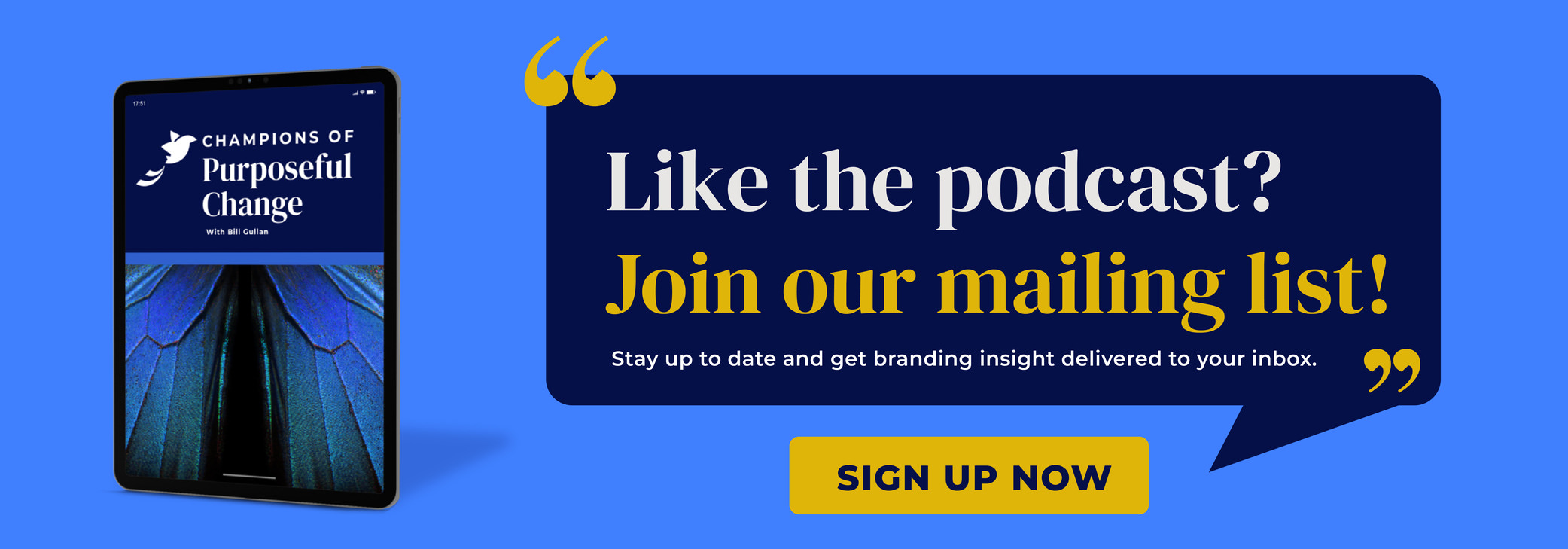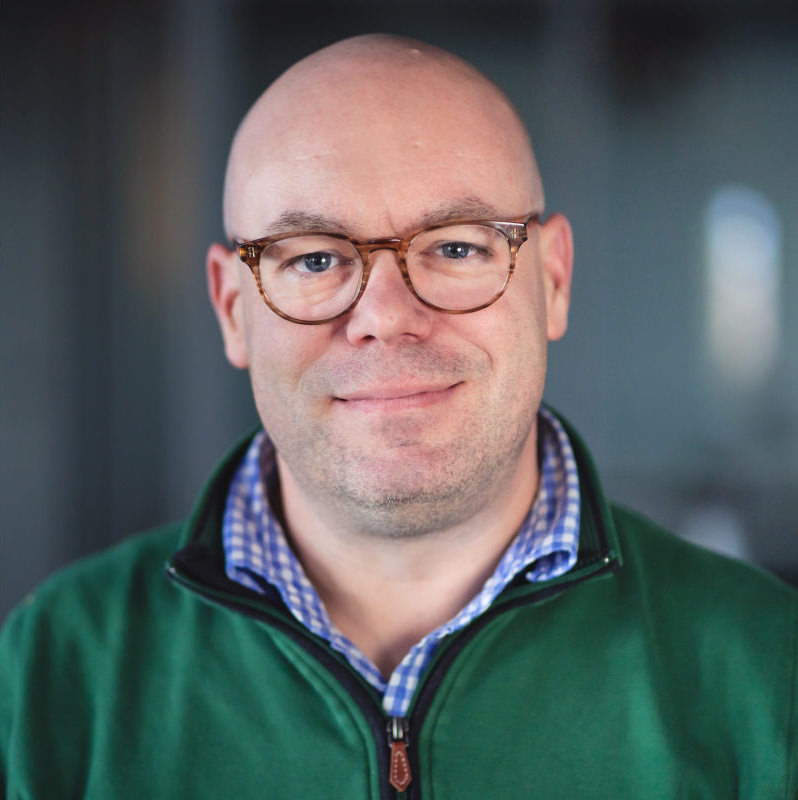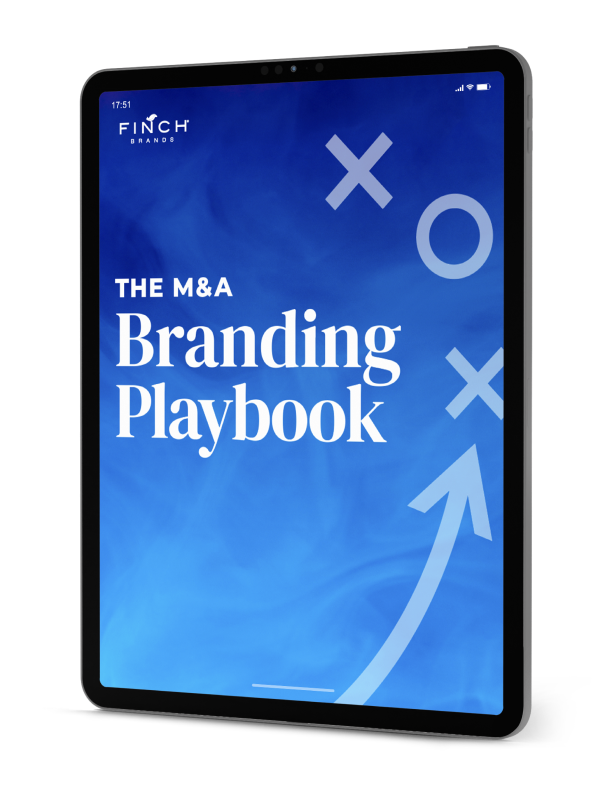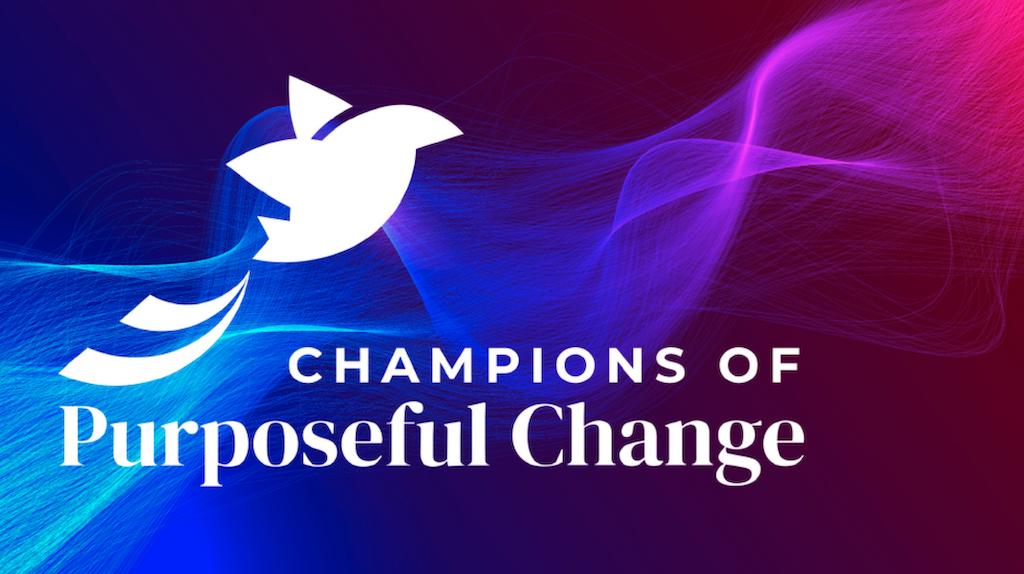From the Dining Room Table to NASDAQ

Jim Martin, Chief Strategy Officer of SIM International, joins us this week to share his experience on how SIM integrated acquisitions to build a greater whole. If you like our podcast, please subscribe and leave us a rating!
Podcast: Download Subscribe: iTunes | RSS
Transcription:
Bill Gullan: Greetings one and all, this is Real World Branding, I’m Bill Gullan, President of Finch Brands, a premier boutique branding consultancy or agency, whatever you want to call it. Thanks for joining us. I always say it’s a treat, today is absolutely a treat. We have Jim, who’s the Chief Strategy Officer at SIM, joining us. And what a story, he’s going to walk through, both in terms of his own development, but you know, I got into this because we love talking branding.
Bill: This isn’t just about Finch and our clients and some of the work we’ve done, but often guests come to us because we’ve had the lucky experience to get to know them through work together. And Jim is no different and he’s a great guy, a leader of an incredible company that has some really exciting news to share, and Jim’s going to reflect on both the reasons to approach a branding project that, again we at Finch were fortunate enough to be involved in and then the reflections on the process itself and then sort of what’s happened after.
Bill: So, this is a business that is a sort of a hidden ingredient, at least hidden to those of us who like to watch TV and go to movies rather than sort of being in that business, they’re hidden but I mean the amount of contributions they some of everybody’s favorite shows and movies is amazing. I encourage you to check them out but, when we found SIM, as Jim will relate, they were a loose conglomeration of seven or more leaders in spaces across production and post-production, across Canada and L.A., New York, Atlanta and the U.S., Vancouver, Toronto and beyond. Incredibly sort of high powered movie and TV production resources who’ve worked with some of the greatest content creators in the world.
Bill: And they were really, at a moment of thinking about how to integrate acquisitions that they’ve made strategically, but also sort of opportunistically. And so this was a classical branding story, of strategically and creatively sorting through clutter, building a combined sense of self thinking through brand architecture, managing internal, as well as external stakeholders and you’re just going to love this story. Jim, Chief Strategy Officer at SIM.
Bill: We are joined by Jim, the Chief Strategy Officer at SIM that’s S. I. M. and I think it’s technically SIM Group. Jim thanks for being with us.
Jim Martin: Happy to be here!
Bill: And we’re happy to have you. And why don’t we start as we normally, I mean this is an incredible story, not only your sort of journey, and what SIM is and has become as well as just to tease the listeners, it has a pretty happy ending. And an interesting ending which is also probably a beginning, in terms of how you’re viewing it, but take us a little bit through your own career and sort of, journey to where you are. I know that the SIM part of this has been about 20 years, you should get a gold watch or something but, take us through Jim’s career backstory.
Jim: It’s you know, not unlike others. I’m originally from Vancouver, completed college in late 80s and I bounced right into the fledgling of Vancouver film and television scene, just as it was taking off. So, my timing couldn’t be better. I kind of bounced around a couple jobs, like we all do out of college and then I met up with a guy called Rob Sim, who was based in Toronto. And he approached me and said, “Would you be interested in opening up a broadcast camera rental shop in Vancouver?” He had one he started in the mid 80s in Toronto, out of his basement and then I was kind of like, “Yeah, sure, sounds like a good idea, I got nothing else going on.”
Jim: So we started that out of a back of a van and then we kind of grew it into a production studio out there in Vancouver. And we started it with one camera, two cameras, we picked up some clients like X-Files, and Entertainment Tonight. Fast forward, we set up in Los Angeles in 1999. That was to focus on post-production for features, again, timing was everything. We set up just as High Definition was coming on to the scene, and we were well positioned to take the company to the next level. Again, then came SIM Atlanta, and then SIM New York, and we had all the main film and television markets covered.
Jim: As for me over the years, I wore a lot of hats, General Manager, in charge of Business Development, Marketing, for a while there I was in charge of HR, don’t know if that was a good idea. And then I ended up as the Chief Strategy Officer, which I’ve been for, oh God I don’t know, five, six years, maybe? And my role is development and implementation of a integrated strategic marketing communications plan, advancing the companies brand identity and broaden awareness, and that’s what led us to you guys.
Bill: Nice, and we’ll get to that in a minute. Your degree I believe it’s an MFA in film and TV, you started on the production and the writing side. So you were, originally a creative, I guess? Or at least a producer. How for you, was sort of the transition into a, sort of functional leadership, more business role, rather than a creative role? Was it gradual? Was there a light bulb moment? Was it just what the company needed and you kind of found your way through? Could you talk about sort of how your own functional interest and kind of what lights you up has evolved as you evolved as a professional?
Jim: Yeah. I mean it’s funny because in film school they’re going around the table and saying, you know, what interests you the most and I remember everybody’s going, “I want to be a writer, director, I want to be a writer, director.” And then it got to me and I just said, “I want to be a producer, I kind of have a thing for the business side of everything and that was my thing.” I wasn’t a fan of directing at all, I could never get along with actors. But I did write for a while and that kind of helped my career, but that was sort of the beginning. I just liked the business aspect of the movie industry, it fascinated me.
Bill: Yeah, sure. So as you’ve added responsibilities at SIM for overall planning, for sort of brand development marketing, seems like that’s a set of functions and specialties that are not uncomfortable necessarily given what’s always fascinated you.
Jim: Yeah, I mean, I don’t have a degree in marketing, I don’t have an MBA or anything like that. Rob Sim is the kind of guy, that you know, he would let you go wherever you want to go. And my whole thing was increasing the business and kind of taking it from a business point of view through expansion and different divisions and service offerings, and it was just something that interests me. I just really, really enjoyed it.
Bill: Yeah, super cool. So, let’s set the scene then when we met in the summer of ’16 or late sort of, spring of ’16. SIM had, and you were 17, 18 years in at that point, SIM had, as you mentioned, grown down into the States with Atlanta, New York and other sort of SIM outposts. There had been a handful of strategic acquisitions, there was a new CEO, could you talk about – so a rebranding process follows to give away a little bit of the story – but could you talk about the thinking kind of leading up to that and sort of how SIM had evolved and what the major components were of the strategy that led you all to think about, hey we need to maybe think about greater brand integration here.
Jim: Well, the thing with SIM is, we kind of started acquiring companies accidentally. It wasn’t something where we sat around and said, “Well what’s our business strategy for this year?” It’s kind of like we’re working with people, like you know, Chris Parker with Bling Digital, that did onset dailies, and we just ended up working with them a lot. And then the conversation goes, “What about us joining forces?” and they said okay, and then fast forward a little bit later, and we ended up acquiring PS Production Services which was Lighting and Grip. They had been competitors for years and through circumstances their company became available and we teamed up with Granite Partners Private Equity.
Jim: And that was sort of a turning point for the whole company and our whole thing was, it was culture first, at culture and fit first. Can we work with these people? Are they like-minded like us? So eventually we ended up with a company with 10 different names all based around kind of an owner operator mentality and that’s great because we’re passionate about our businesses, we all had a common goal, client first, our people first, kind of thing. It all worked.
Jim: The problem is, when you’re sitting across the table of a production executive and they look at you and say, “Okay, well who are you?”, and you hand out like five or six business cards it’s like, what the heck is this, you know. It’s brand fusion, and again we were just a group of people, just trying to figure it out along the way, and that was kind of the fun part. But then, you know, Rob Sim wanted to do other things, and he wanted to get a little bit away from the day to day so we brought in Jamie Haggarty, almost three years ago. That provided a new voice, just another voice kind of saying what we already knew, “Guys we got to get this brand thing under control.”
Bill: Right, right. And there was, I know at that point, as you had mentioned there was private equity involvement, so there were investors, there was … I know to your point about those sort of sales and relationship development efforts being confusing. There were incredible names, well established names of companies that had been acquired, whether it was the name of the leader or at the very least a name that had been built, these were award winning, amazing resources who had independent, sort of equity, and relationships, but at the same time, at least it seemed to us and I think to Jamie and to you and everyone else, there was sort of money being left on the table without brand integration both structurally on the kind of sales and business development side but perceptually in the minds as you say, of that production exec sitting across that table.
Jim: Yeah, I mean … I’m sorry, I’m not sure where the question was in there.
Bill: Yeah well I tend to make long statements and then end them with the inflection that suggests they were a question. But you know, so, when the process began, I know that some of the concerns or important topics beyond the content of what the brand sort of was going to be coming out the other side, there were, to your point, a lot internal voices, there was a lot of emotion and passion for the business but also for sort of individual parts of it, there was some discussion about renaming. So any reflections on sort of how you were thinking about the branding or rebranding process as it began, and as we got into the work, what were some of the major ingredients that you kind of thought were going to need to be there for it to be successful?
Jim: Well, that is a great question because it was such a journey. The other thing about Granite Partners, like SIM, they’re the same culture, they’re made up of a lot of very successful owner operators, whose names are on the businesses that they’ve created and that was a big deal. So, when we joined up with Finch, it was great because Finch brought us through surveys and again, nobody has that kind of experience on our side, so it was great, they came in and said, “Look this is what we’re going to do, we’re going to reach out to your staff. Everybody gets a voice. We’re going to ask questions about what they think of the brand, what they think of the company. That started the form of picture. Then we reached out to stakeholders. We reached out to clients.
Jim: It started becoming very clear that we needed to do something. With Finch coming in it was like a neutral kind of entity coming in here, because if Jim says, “Hey, guys, I think it should be called Sim,” well of course you do Jim.
Jim: You’ve been with Sim since the advent of sound in movies. Maybe we ought to have something a little bit more neutral. Bill would say, “I think it should be called Chainsaw. If course you do, Bill, you’re married to Chainsaw.
Bill: Right.
Jim: So James comes in and says, “You guys need to do something.” So a few things happened next … Are we going to rename it? That went on for months.
Bill: Yeah, I remember.
Jim: We worked with different names. Jamie Haggerty and Chris Parker were working on this as well as me. We came up with all kinds of crazy names. But in the end, when we went in front of the board, they said, “Well why are we changing it from Sim?”
Bill: Right.
Jim: Sim represents owner/operators. We’re owner/operators. We have Tattersall, but it wasn’t a big enough company for market acknowledgement, so we ended up just staying with Sim. We dropped Sim Group. We dropped everything. We stripped it all back. Then we came up with sub brands. So it was ‘Sim Camera’, ‘Sim Lighting and Grip’ and ‘Studios’ and ‘Post’.
Jim: Then we just started getting our foot and kind of built up the new logo, the new look, the new colors, all with Finch’s help and just kind of blew this thing up into what it is today.
Jim: Which was a great thing for our company. All of a sudden everybody was happy, because we all had a say in it. Everybody had input and feedback. We didn’t do this overnight. We took a long time to do this, maybe too long, but in the end it was good.
Bill: Well thanks for the kind words. To unpack that a little bit, some of the key ingredients in this, that you highlighted, one the role of data and not a ponderous million-person research endeavor, but enough that internal and external voices could weigh in on this. It sounds like that was a helpful, as well as a third party, being the deliverer of it, a helpful to get these past executives rallied around a common knowledge base with which to make strategic decisions.
Jim: Right.
Bill: You also mentioned brand architecture. I remember starting out on this. There were at least seven names. I think there were more entities that were wrapped within that, but that ultimate solution of elevating Sim, but creating really logical sort of almost divisional structures around the lines of business, the thinking there was in part creative, but it was also it seems like the business lines that were created jived very well with how the product, sort of the projects, are bought and sold in terms of who the right people are.
Bill: We found services that were bought and understood in a common way by certain functions within a production or within a production studio. So brand architecture was an important element of clarifying the overall structure of Sim.
Jim: Yeah, one thing that was very, very brilliant, an idea, is how do you call your company Sim, and lay out the sub brands, which are not anything to do with Chainsaw or Tattersall or Bing, but still retain some form of culture? That was through colors.
Jim: So what we did is we kept the old Sim blue to highlight cameras. We kept the old Chainsaw orange to highlight posts. Studios was green, and PS Production Services, we kept their … and we kept their shades. We kept the shade of red for PS. All of them had the same shades.
Jim: That became a visual identifier for our brand. It was awesome how that all came together. Everybody felt good about that, because they sit down, and now they can tell the story of what this means and what that means. It’s fantastic.
Bill: Now, thanks, to be able to have a strategic rational for a brand structure, but then to pay it off creatively in a way that nods to culture and nods to history, but also integrates, yeah, there was a logic to it that was simple, but at the same time very deep and textured.
Bill: You mentioned the logo. I know one of the … when it comes to the before and after, one of the starkest elements of that before and after story was the sort of contemporization of the Sim logo. I encourage our listeners to take a look at SimInternational.com.
Bill: Jim, you can certainly speak to it. I think what we were going for together was, this sort of brand message, was this notion of end-to-end content creation of being experts and really peers when it comes to the creative process. So the “i” on Sim being sort of artistically rendered in this highly created developmental way seems to be the key to making a simple typeset really come to life.
Jim: Yeah, and that was all Finch. We looked at, I don’t know, 20 different designs. We went through, I don’t know, 30, 40 different fonts. We loved what we affectionately refer to as the squiggle. We worked with that.
Jim: That just spoke to what we are, playful, smart. It’s just something that just resonated again with our background, what we do. It just worked for us how it all came together like that.
Bill: Yeah, you mentioned the color coding. Sim, I believe, today has over 500 team members across the many offices and nooks and crannies of the business. Speak to, if you wouldn’t mind, we talked about it a little bit on the upfront, but when it comes to rolling out something like this, the importance of internal communications.
Bill: One could easily understand that you need to explain to clients what this means. You need the sales team to be able to render this. You need external marketing to launch this with some energy and power. What about the internal piece?
Bill: How do you, understanding that there were voices within the process, and that maybe created some buy-in on the upfront, how do you deal with culture change or behavior change, or at the very least the progress reflected in this when it comes to the internal team in terms of educating and motivating them to really rally around it?
Jim: Again, a good question, and so it’s kind of funny how I get to like … your questions bring back a lot of good memories. It hasn’t been that long, but there was just so much packed into it.
Bill: Sure.
Jim: and just quickly move on, but so we … I put on my producer hat, and we decided that we would create what we called the Legacy Reel, which would tell the story of Sim.
Jim: And so what was important to us is that for our internal employees, our teams, we wanted to make sure that yes, we are changing, depending on which division you’re working in, we’re changing the name from Chainsaw to Sim or Tattersall to Sim, but we’re not losing sight of what we’ve done in the past. So we created this really – I love it. It’s on our website- the Sim Legacy Reel.
Jim: It just had a little snippet from each of the founders, of the owner/operators, and how this all came together and why we were doing it and making sure that we weren’t going to lose site of our past, because our past defined us. And so even still today, in every office, you’ll see a big plaque commemorating all of the former brand names and how they all fit under Sim.
Jim: It’s just something like when we did our internal rollout there last fall, the Legacy Reel was front and center. We talked to everything about how proud we are to have come from such humble beginnings to what we are today. That, not losing site of who we are and where we came from, again, resonated with all of our staff. They bought into it. It felt like the right thing to do. Sure-
Bill: Sure.
Jim: It would be nice to see their name go away and all that stuff. We can talk about that a little later, but it just felt like the right thing to do. And people came away feeling pretty darn okay about it.
Bill: Yeah, no, it’s powerful. This company, again, a name that we, who are consumers of entertainment, won’t likely know, but the credits, I mean from Game of Thrones, to Stranger Things, to the Olympics, I encourage all of our listeners to watch that reel and just be amazed with all that Sim does.
Bill: But the role of it strategically, in terms of culture internally, is also a really powerful story too. So we know that there’s again, a fun end to this story, but so the brand launches, there’s internal education, this reel and the plaque, and other sort of really carefully chosen initiatives that were designed to bring everyone along internally and externally.
Bill: Talk if you wouldn’t mind a little bit, about those rebranding early days and how things went. Were there any things that surprised you, either by how smooth they were or by how challenging they were or what were some big milestones within that launch process?
Jim: Well, again, having Jamie Haggerty come in with a different perspective, and he had done something like this in a former position, so he kind of had an idea of how this would work physically. So his whole thing was, and it ended up being a great idea, we would roll it out twice.
Jim: We would roll it out internally over a span of seven days where we would go to each office and we would present the Legacy Reel and how is this going to work and we would speak to it. We did this for all of our staff and all of our offices.
Jim: Then the following week we did it all again, but this time we invited all of our clients to come into each of their locations, and now the staff was educated in what we’ve done. They’re all up to speed. They can speak intelligently to what we’ve done, because they’ve already gone through the entire endeavor.
Jim: So that too, one-two punch, really helped explain the whole thing, and just made everybody comfortable with what we’ve done. Yeah, the signs go up and the visual markers of what we’ve done are there, but really nothing beats standing with a colleague and them buying into what’s happened and explaining it to a client. It went really smooth.
Bill: Right, wow, and it just underlines the … This is very much on brand for what Sim is to what you said earlier, Jim, the … This is a collaborative, highly creative, highly accomplished, professional group of people serving people, when it comes to clients.
Bill: And so to do it the way that Jamie and team and all of you did it, and to take that time and to have those break-neck weeks, I’m sure everybody was exhausted but exhilarated, but it was really important that this was done in a celebratory, interpersonal, face-to-face kind of way, both with internal team members as well as with clients. I would imagine, looking back on that not only as a professional milestone and accomplishment, but a moment sort of a professional milestone and accomplishment. But a moment that has led, and sort of will lead … when the story of this company is written completely one day, that probably deserves its own chapter.
Jim: Yeah.
Bill: Very cool. There’s big news out of Sim world, do you want to fill us in on what’s happening now?
Jim: Well, as of September 13th, we have entered into a merger agreement with Saban Capital Acquisition, and Panavision. You know, Panavision is a big, big name brand in our industry and we’ve entered into agreement with them. We would become a public company once the deal closes. That deal expected to close in early 2019, but yeah, exciting news. Again, it came at the right time. We’re all really, really excited with it, and yeah, as you said, it’s not only a new chapter, it’s probably a new volume in the history of us, of Sim. Because this is a big deal. This benefits a whole lot of people.
Bill: Yeah, totally, and I know Panavision was one of the organizations that we looked at very early in the process, as being reflective of sort of market leadership and that Sim needed to learn from and position against or adjacent. And now to be part of this combined entity, likely to go public … the ability to go even more. End-to-end production and posts, a foremost provider of all these services, and to attract … is it pronounced Saban?
Bill: I guess I’ve never … that’s why I wanted you to say it first. S-A-B-A-N. To attract a sort of an investor base of that quality and of that echelon, the deal’s valued at over $600 million. It’s a big output, big outcome for all involved, and it’s testament to what you and your team have worked so hard to build over several decades. It’s such a wonderful thing for all involved.
Bill: Do you have a sense … I know it’s all sort of just happened, but do you know what happens to Jim in the new world, or a little bit more about how the company’s going to operate moving forward?
Jim: Right now it’s kind of different because we are, because the deal has to close, and lots of things with these kind of acquisitions and things can change. But right now, it’s business as usual. We’re in communication with Panavision. We’re just at the early days of setting up integration teams and things like that. But again, it’s the brave new world and we’re just kind of taking it, you know it’s a cliché, but it’s a day-to-day process right now.
Jim: We’re brand new. Everybody here at Sim is brand new, we’re trying to figure it out. The Panavision folks, Kim Snyder and company have been fantastic. Reaching out, making us feel part of the process, and so it’s exciting. It’s a little jittery, I’d have to say, because you just don’t know, but so far it’s been great.
Jim: I just want to share this … When Jamie Haggerty, our CEO was saying, announcing the deal to the staff a week ago, it’s kind of funny because when we were talking to other potential suitors before the rebrand, we get into this … it would take us 20 minutes to explain who we are, what we do, and all this stuff. With the whole rebranding that we did with Finch, we just sit down and you can explain our story within two minutes. It makes sense, it’s exciting, and you can cut to the chase. So, our rebranding played a massive part in having this deal come through.
Bill: That’s nice of you to say, and of course, we’ll take full credit. It has nothing to do with 20 years of incredible, you know, credits, and that reel … and all the quality and talent within those walls. I think it was really just the brand, so thank you kindly.
Jim: Well, you guys … Finch was great. Because I mentioned, I don’t have any formal education in this. And working with you guys, you guys were true partners. You brought us along, you put up with all of our, “Well, I’d like the squiggle to be a little thinner, and I’d like this to be that.” And I mean, I would hang up the phone and think, “What do they think of us right now?” You guys are so patient. It was a lot of fun doing that. It’s really one of the highlights of my career here at SIM through that whole rebranding process.
Bill: Well, we’re immensely proud of it. But I guess the joking aside, the larger point … We knew going into the work, and you all did the enterprise value, and the simplicity that helps drive enterprise value, I think, was a core rebranding objective. It was not just about a creative refresh, although that was important. It was not just about kind of structural integrity, though that was important.
Bill: The ability of the firm, on the back end of it, is to go to market with a clearer, and sort of renewed and highly energetic sense of self … would help Sim fulfill many business objectives related to profitable growth. But obviously, enterprise value, for whatever that would lead into, and what it’s led into is an amazing success story for all of you. And we couldn’t be more thrilled.
Bill: And I think some of the things you highlighted when you were talking about the process … the strategic and creative, as well as the cultural aspects here, likely put the organization in very good stead. As that next set of questions about what Panavision and Sim become, organizationally and otherwise, there’s a little bit of muscle memory for how to surf those things out. And obviously Panavision has it, too, and can’t wait to see what the future holds.
Jim: Yeah. It’s exciting, especially when you think about our humble beginnings, starting these things on backs of vans.
Bill: Yeah.
Jim: And just kind of off of the dining room table. I mean, that’s where Sim lifestyle started, on my dining room table.
Bill: Cool.
Jim: And then to think, fast forward 20 years, and you do a merger agreement with a company like Panavision. Next thing you’re going on the Nasdaq. I mean, that’s quite the journey.
Bill: Yeah, well, I got to say, and no offense to our listeners who have sort of a different path, I find that journey so charming and exciting, compared to a white space, MBA, sort of bloodless identification of market opportunity and friction. Now, there’s certainly room for that, and brand strength helps bring that to life, too. But good old-fashioned entrepreneurial story of people who worked really hard to make good, and have made it oh, so good … is more up my alley. And you’ll have to let us know when you’re ringing that bell on Nasdaq. We’ll make sure that we tune in early that day. And as you maybe … Thank you for your time. We’re taking more than we said we would.
Bill: But as you think back, Jim, on not only the journey with Sim, but your own career as a whole, starting with a degree in TV and film, and having a passion for that space, quickly evolving your sort of skills and interests as a business person, and as a creative person … Any reflections on your own path? Any words of wisdom you might share, for folks who may be just starting out, or who are sort of inspired by your story?
Jim: You know, I got lucky. Because I met Rob Sim, and he had a lot of trust and faith in me, and that I could do this. My thing is, when I talk to my kids or when we talk to staff that are coming on, it’s like … you go through high school, you go through college, you get your degree and things like that, and you know, it’s okay not to have it all mapped out.
Jim: Don’t be afraid to do different things, and wear as many hats as you can. Just playing outside of your comfort zone is a big deal. Believing in yourself, just figure it out along the way. There’s no reason it can’t be fun. And it’s been fun at Sim, and there’s a lot of people that thank Rob for giving them the opportunity. Sim camera site, or Bill Garande… There’s just so many good people.
Bill: Yep.
Jim: kind of entrepreneurial mentality and path to getting this all done. Just don’t be afraid to do different things.
Bill: Yeah. Well, that’s a great place to leave it. Jim, Chief Strategy Officer at Sim. Thank you so much, and congratulations.
Jim: Thank you. Thanks very much.
Bill: Not much more to add to Jim, other than our thanks for his partnership, and his kind words are making me blush, but most importantly, the opportunity to see the development of his company up close. And to know that, at least for now, there’s an extremely happy ending and a new chapter, is greatly meaningful to us here at Finch. So, as always, help us out, if you feel compelled. Hopefully this content’s appealing. There’s three ways to support us: Like us, in the app store of your choice … That’s not really Like, I guess, but it’s a review, maybe of five stars, with a couple of words about what you like about robo branding, or ways that we can improve.
Bill: So Liking us would be great. I think also, clicking that subscribe button that makes sure that you don’t miss an episode. I know that our release schedule has been a little bit intermittent, here. And we’re hoping this fall to get right back into the every two week cadence. At least that’s our current thinking. We have a few great ones in the can, and a lot more planned. So there’s more to come in your earbuds here.
Bill: And then the third thing, let’s keep our dialog going. On Twitter, @BillGullan, or @FinchBrands. We love comments and questions and ideas. And so, that’s a great way to hopefully communicate online, but off-air, about how to make ever more meaningful and valuable to those of you in our listener base. So grateful as always, for your time with us. And we’ll sign off in the cradle of liberty.






